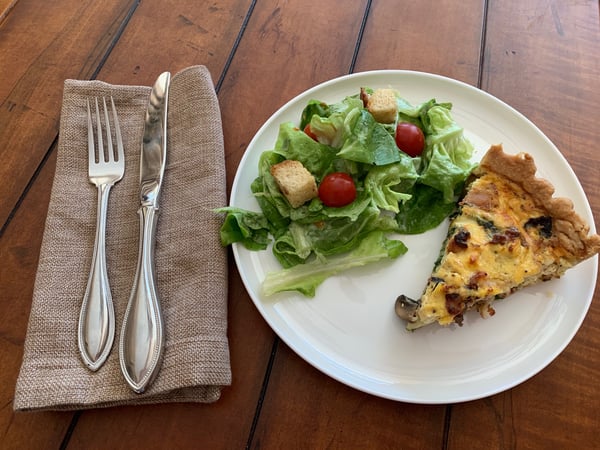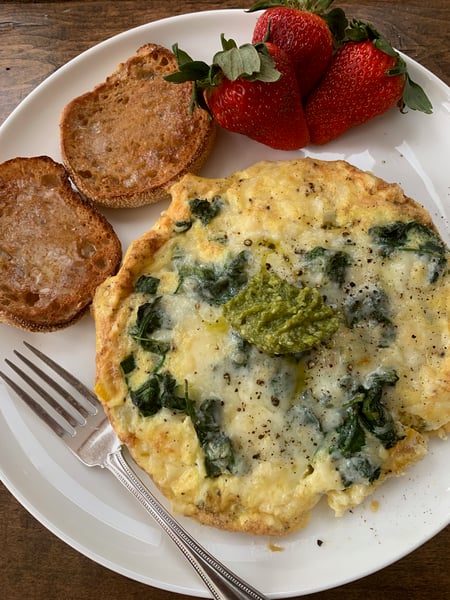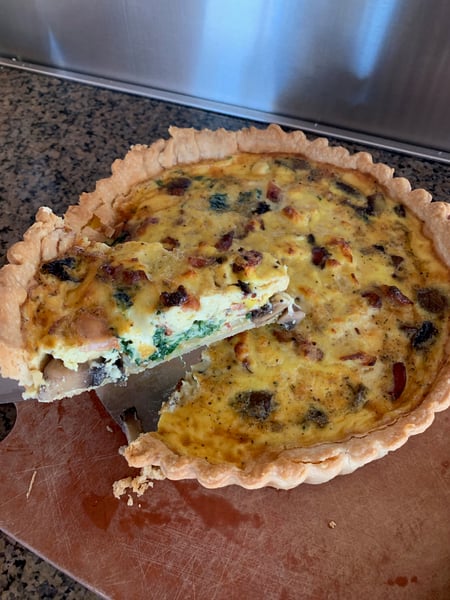
Leftovers. You either love them or hate them. Those who love them see them as a chance to enjoy a favorite meal all over again, and in some cases, like noodles that my mom fried in butter the second time around, leftovers can taste even more delicious than the day of their debut. But for those who hate them, they are dreaded, or just thrown in the garbage after sitting in the fridge for a week or two.
I have to admit I am in both camps on leftovers. As a kid I ate them quite regularly, and liked them very much, but as an adult I got out of the habit. Perhaps it's because as I grew older society also changed, and we eat out so much more than we used to, or maybe it's because I lived alone and when I cooked it seemed like I was eating the same leftover for days, or let’s be honest, maybe I was just lazy. Whatever the reason, I have a newfound love for leftovers, and a deep desire to not just reheat something I already cooked, but in some cases to create an entirely new dish.

One of the most delicious ways to use up leftovers is to make quiche. It is one of the most versatile dishes I know. It's quick and easy. It can be eaten warm or room temperature. It can be made with or without a crust, and can elevate very simple ingredients, esp. your leftovers into a savory custard delight. I often use up leftover vegetables from weeknight dinners to make a delicious Saturday or Sunday morning treat.
The key to a phenomenal quiche is the egg mixture or custard, and the way to make sure the custard is perfect no matter the size quiche you ultimately make is to learn this ratio of 1 egg (large) to every ½ cup of whole milk, half & half, or heavy cream. The higher fat dairy you use, the silkier the texture will be, but whole milk works beautifully. I would not recommend using anything lower in fat however, or the custard will become tough. For a standard 9” pie plate, that ratio will be 4 eggs to 2 cups dairy. It is also important to add salt and pepper to the custard mixture before baking. I recommend 1 teaspoon of salt for the standard amount of custard listed above because you will probably be adding other ingredients such as cheese, previously cooked vegetables, perhaps bacon or sausage that will already be seasoned. I also recommend baking in a preheated 375 degree (no convection!) oven for 30-40 minutes, until the custard is just set (the center will still jiggle slightly when shaken). Allow the quiche to rest for 10-15 minutes and then slice and serve alongside a salad and crusty bread for lunch or dinner or with a lovely fruit salad for breakfast.
I didn’t add all of the steps for making the traditional crust in which most quiches are baked because the truth is, I often omit it in my own cooking for time constraints.

However, if you do want to make it with a crust The Chopping Block's pie and tart dough recipe is excellent, and follow the instructions for blind baking with dried beans or pie weights.

One of the best aspects of cooking a quiche using leftovers is that you can make a quiche out of leftover ingredients from many of our cooking classes. Steakhouse DIY is an excellent example: cut up the twice baked potato and vegetables, place in a buttered pie plate, make the custard, add the cheese of your choice, and bake. If there is leftover steak – do a quick sear of each side on a hot skillet, slice and serve alongside of your crust-less quiche for lunch the next day. Yum! Now if we just had leftover dessert…

